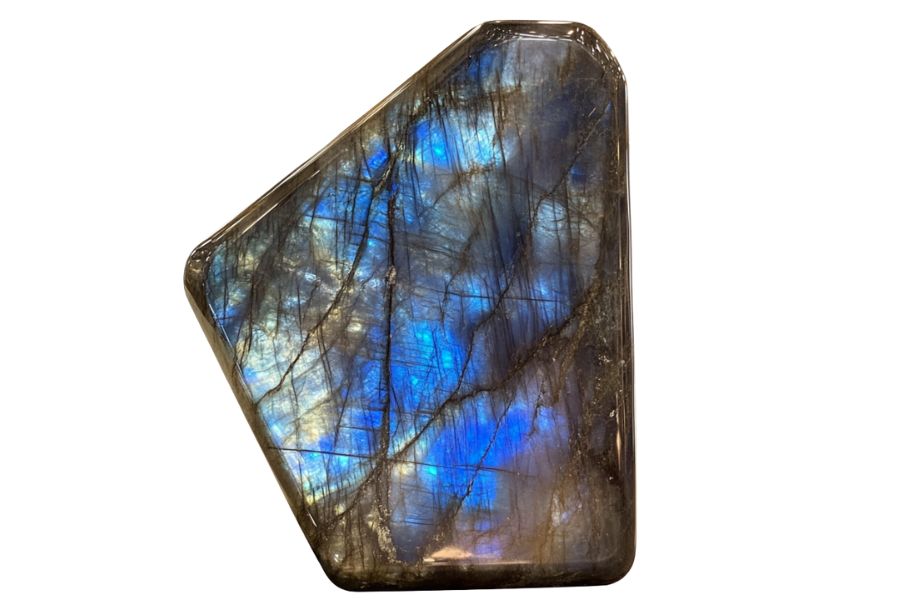New Mexico hides some of the best labradorite in the country. I’ve spent years digging through the state’s rocky terrain. The thrill of finding that first shimmering piece never gets old. Trust me, nothing beats the feeling of dirt under your nails and a pocket full of stones.
I remember my first hunt near the mountains. The sun was hot, water was scarce, but the rocks were plenty. That’s the thing about labradorite hunting in this state; it makes you work for it. The best spots aren’t easy to reach.
The desert landscape might look empty to most folks. But rock hunters know better. Between the cacti and dry creek beds lie treasures waiting to be found. New Mexico’s geology created perfect conditions for these stones to form. With a bit of patience and the right knowledge, you’ll head home with something special.
How Labradorite Forms Here
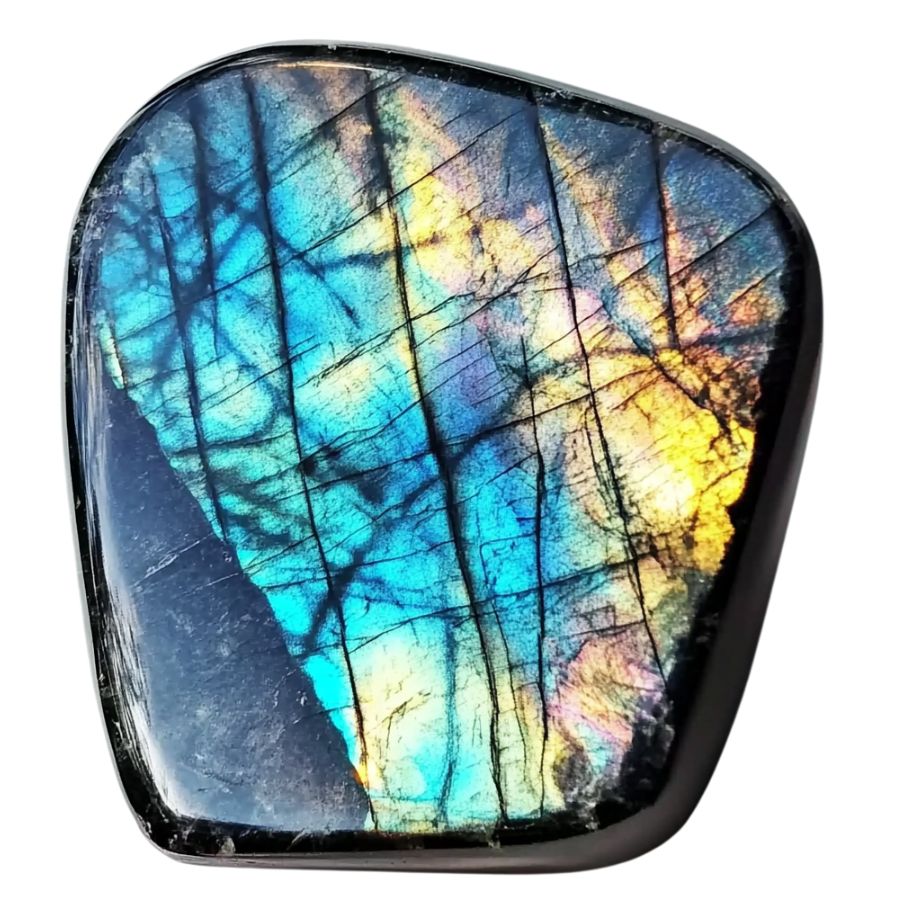
Labradorite forms deep underground when magma slowly cools and crystallizes. The process happens when different minerals separate while cooling, creating thin layers stacked on top of each other. These layers have slightly different chemical makeups, usually about 1 micron thick.
When light hits these layers, it creates that stunning blue-green flash we love, called labradorescence. The stone starts out as a mix of calcium, sodium, aluminum, and silicate minerals.
As it cools, these minerals organize themselves into this layered pattern, which happens most often in places where magma intrudes into the surrounding rock. It’s like nature’s own light show, frozen in stone.
Types of Labradorite
Labradorite comes in several distinct varieties. Each type exhibits special qualities that make it sought after by collectors.
Blue Labradorite
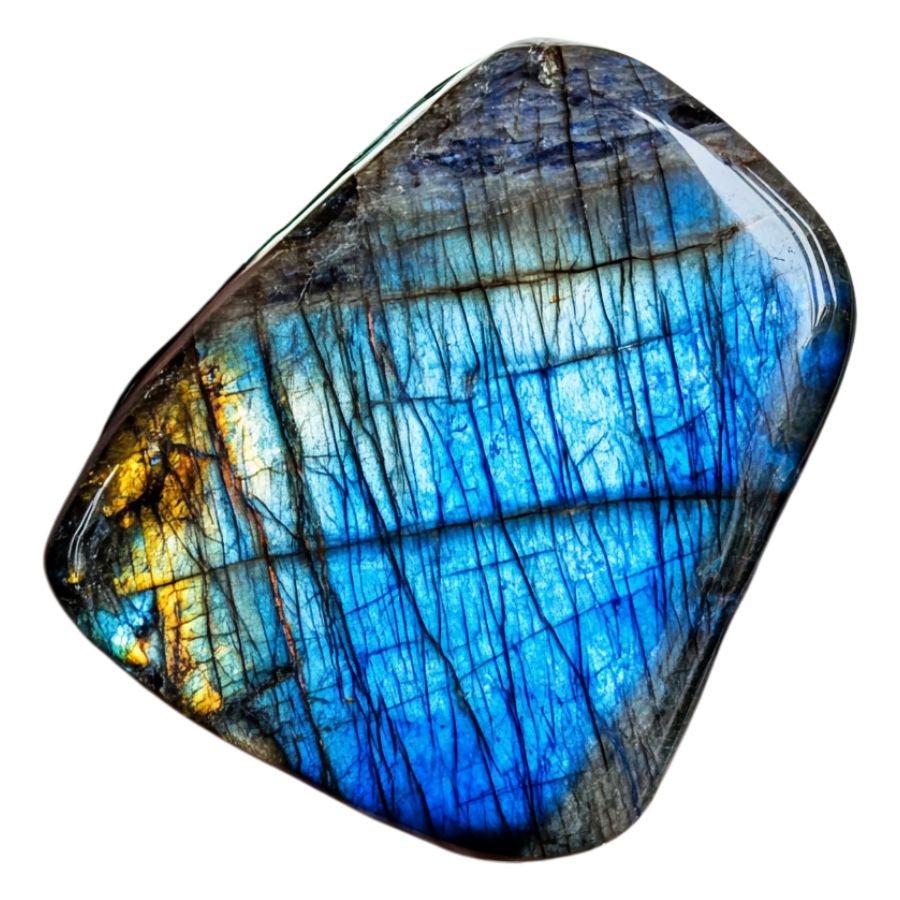
Blue Labradorite stands out for its remarkable blue iridescence against a dark gray or black background. When light hits the stone’s surface, it creates a stunning display of electric blue flashes, sometimes accompanied by hints of green or violet.
The blue flashes appear most vivid when viewing the stone from specific angles, creating an almost magical transformation as you rotate it. This effect is often compared to the ethereal beauty of the Northern Lights.
Exceptional specimens display an intense, electric blue flash that covers a large portion of the stone’s surface. Some pieces also show secondary colors like aqua or sea green, adding depth to their visual appeal. The contrast between the dark base and bright blue flashes makes each piece unique.
Golden Labradorite
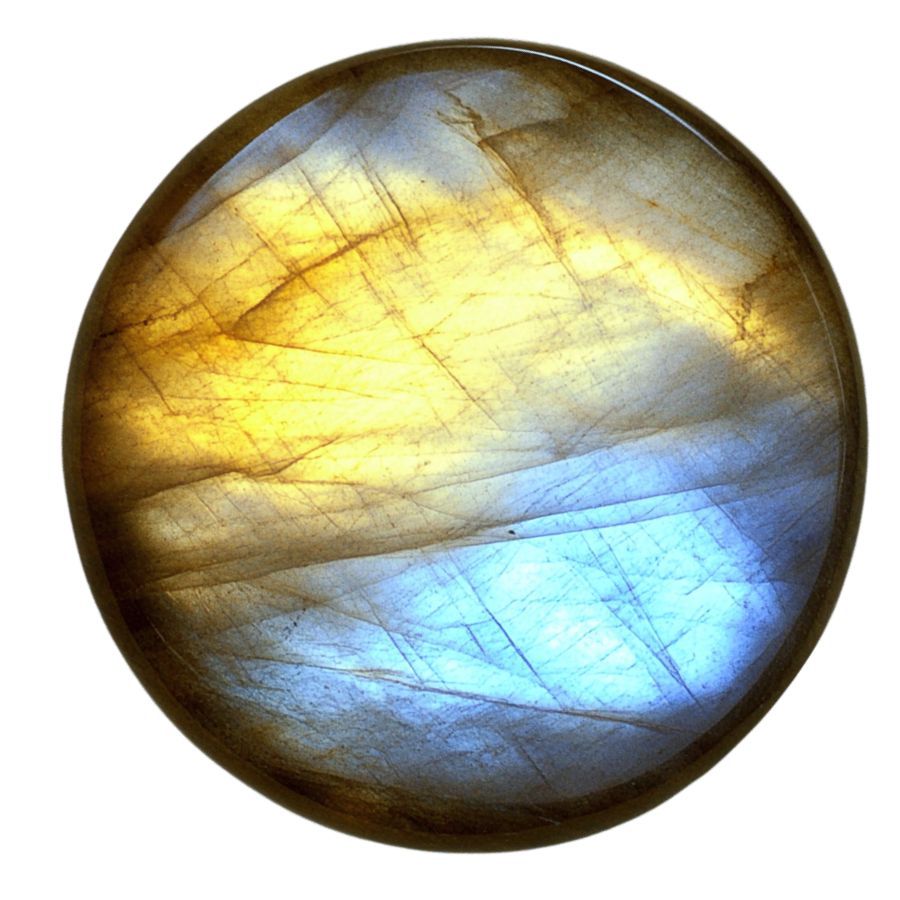
Golden Labradorite displays a mesmerizing golden-yellow sheen that sets it apart from other varieties. The stone’s surface exhibits brilliant flashes of gold and amber, creating a warm, sun-like glow that seems to emanate from within. These golden rays often appear alongside subtle hints of green or champagne colors.
What makes Golden Labradorite special is its ability to display multiple golden hues simultaneously. Some specimens show a range of colors from pale yellow to deep amber, creating a multi-dimensional effect.
The golden flash can vary in intensity and coverage, with premium specimens showing broad, bright areas of gold schiller.
Rainbow Moonstone
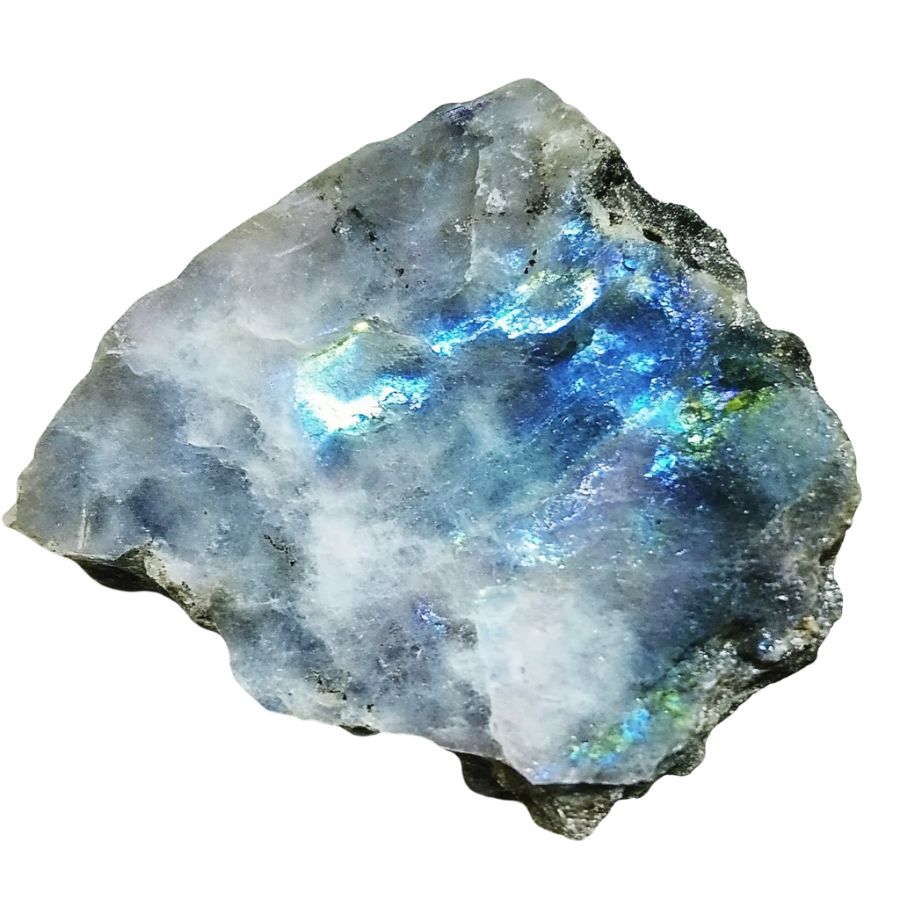
Rainbow Moonstone Labradorite exhibits a distinctive white or colorless base with an enchanting blue sheen that floats across its surface. Blue sheen is often accompanied by flashes of other colors, including pink, yellow, and green.
This stone’s most captivating feature is how its colors appear to float just beneath the surface, creating an almost three-dimensional effect. As light moves across the stone, these colors shift and change, revealing new patterns and combinations. This creates a dynamic display that seems to change with every movement.
The stone’s transparency can range from translucent to semi-transparent, with the most valued pieces showing excellent clarity beneath their shimmering surface.
Spectrolite
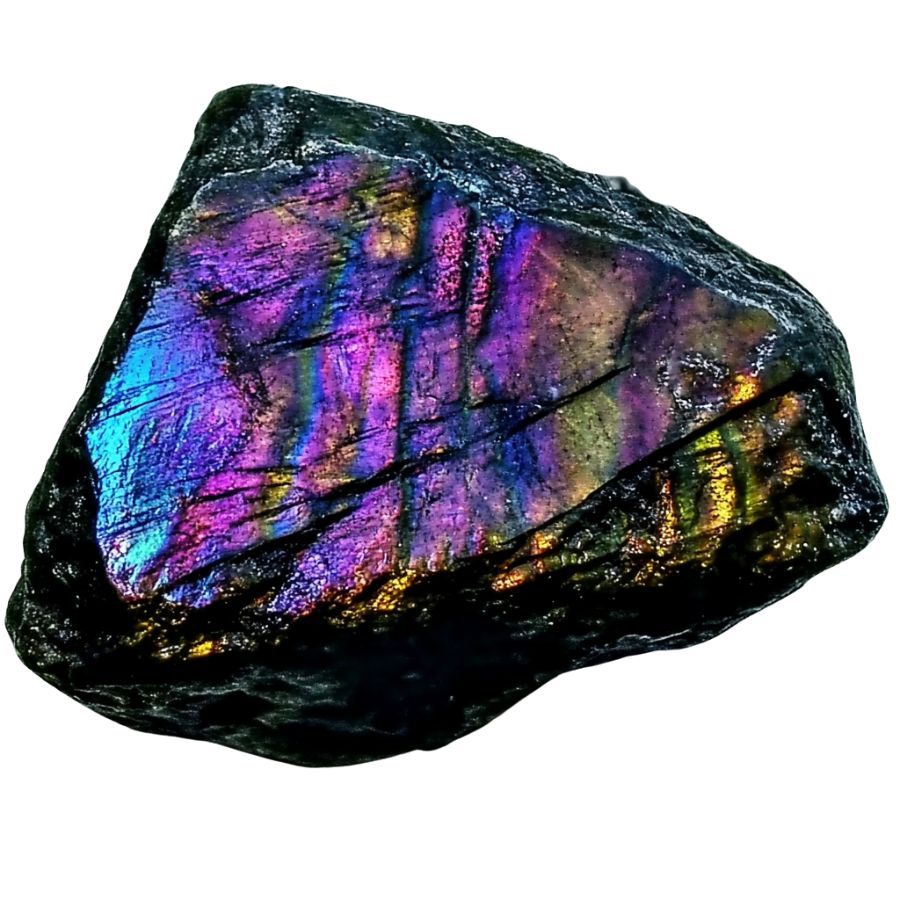
Spectrolite reigns as the most dramatic member of this stone family, with its distinctive jet-black base setting it apart from other varieties.
What makes it truly special is that premium specimens can simultaneously display the complete spectrum of colors, from deep indigo to bright orange, emerald green to royal purple, all in a single piece.
The finest specimens possess what experts call “full-face color,” meaning the vibrant display covers most of the stone’s surface rather than appearing in small patches.
This characteristic, combined with its remarkable color intensity, has earned Spectrolite its reputation as the most visually impressive variety of all similar stones.
Transparent Labradorite
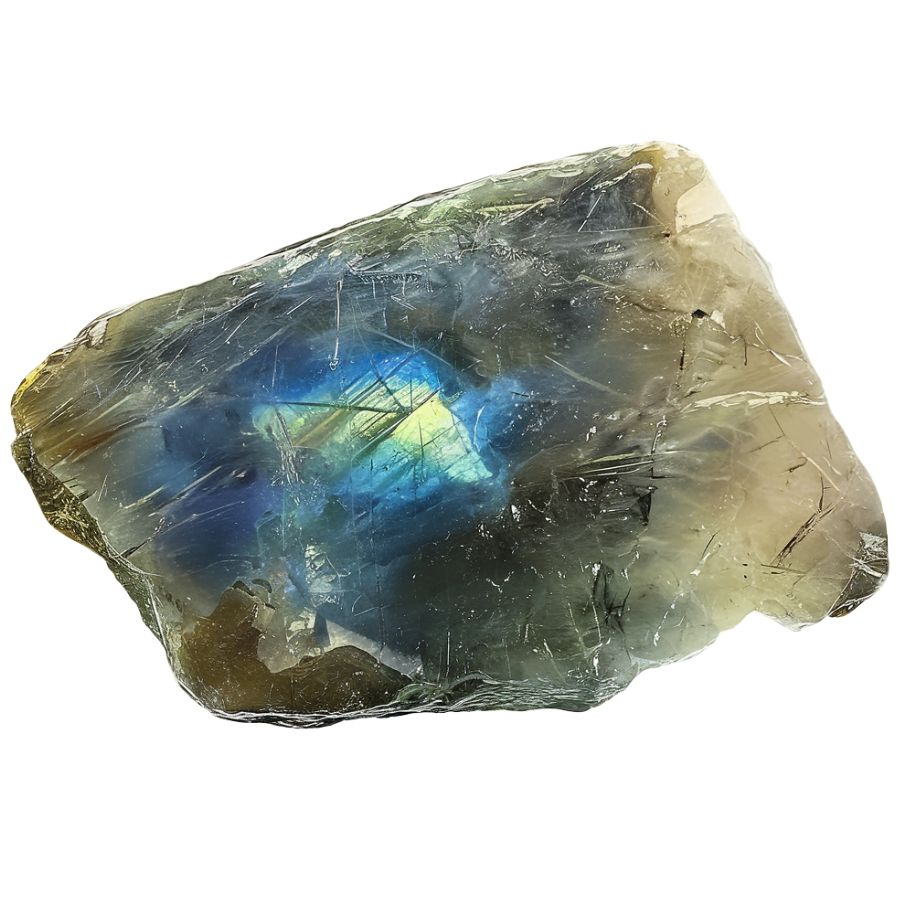
Transparent Labradorite exhibits a remarkable clarity that separates it from its opaque cousins. Crystal-clear areas allow light to pass through, creating an exceptional display of blue flashes against the transparent background.
Natural specimens often show areas of both transparency and translucency. Beautiful color changes occur as you move this stone, with the transparent areas revealing subtle blue sheens that seem to float within the crystal.
Some pieces display additional colors like soft greens or pale yellows, though the blue flash remains dominant.
Remarkable clarity combines with the signature color play to create stones that appear almost liquid-like.
Andesine-Labradorite
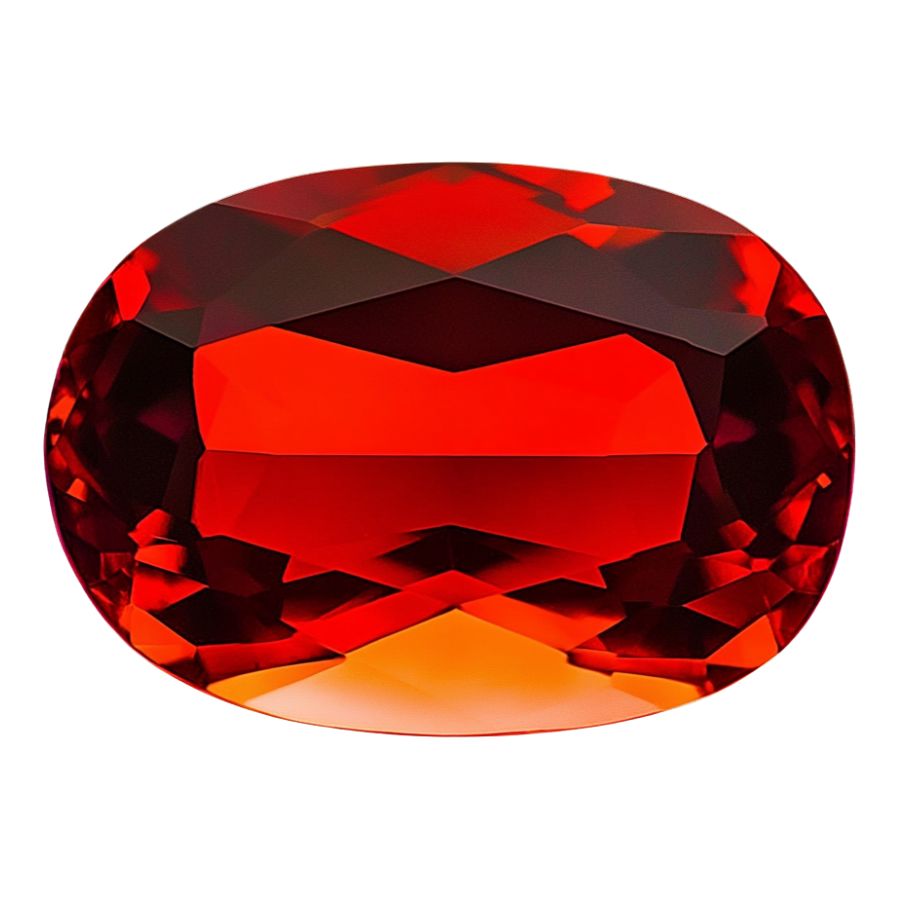
Reddish-orange hues dominate Andesine-Labradorite’s appearance, creating a warm and inviting glow. Delicate green and yellow streaks often appear throughout the stone, adding complexity to its color palette.
Metallic sparkles dance across the surface, different from the typical labradorescent effect. Fresh discoveries of this relatively new gemstone continue to reveal new color combinations.
Striking color variations appear in high-quality pieces, ranging from deep red to bright orange. Many specimens show subtle color zoning, where different hues blend together in distinct patterns.
Black Labradorite
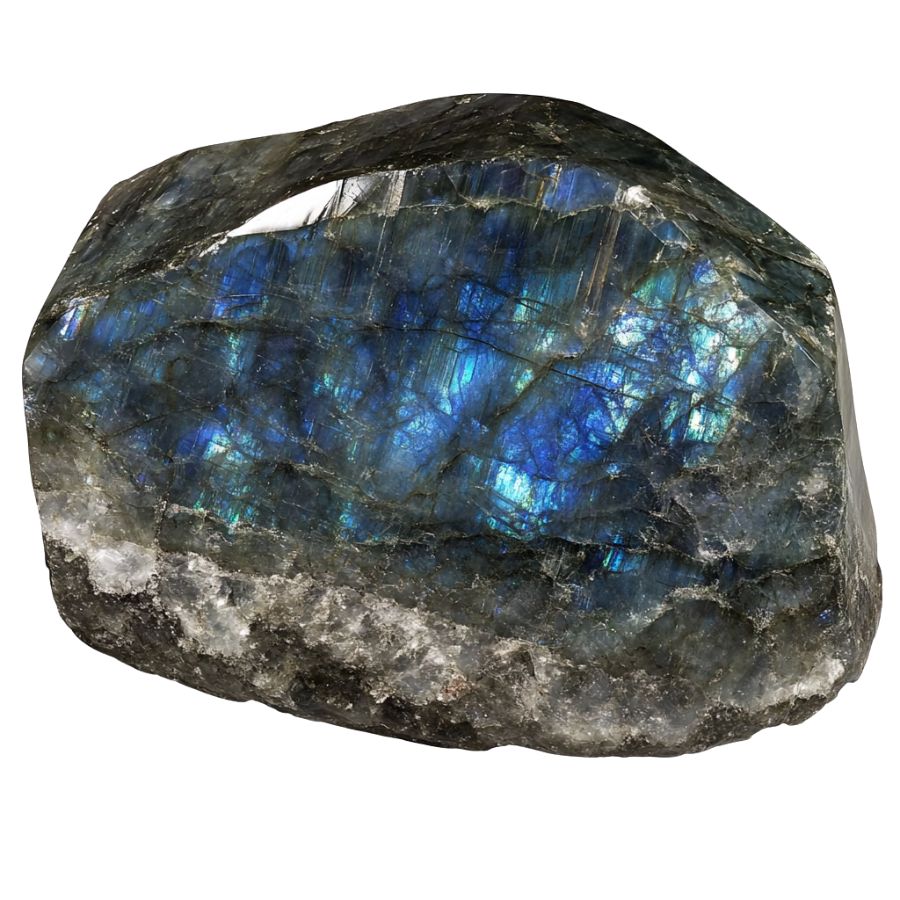
Black Labradorite presents a dramatic dark canvas that emphasizes its colorful display. Bright flashes of color stand out dramatically against the deep black background, creating stunning visual contrast.
Most specimens show multiple colors at once, creating an eye-catching display. These color displays often include electric blues, emerald greens, and golden yellows, all visible simultaneously.
Natural sunlight brings out the boldest displays, while artificial light can highlight subtle color variations. Some specimens also show interesting patterns in how the colors are distributed.
Brown Labradorite

Brown Labradorite features rich earth tones ranging from deep chocolate to warm amber. Peach and orange undertones often appear throughout the stone, creating depth and dimension.
Multiple color zones create interesting patterns within each stone. These patterns can include stripes, swirls, or mottled areas that combine different brown and orange hues.
Subtle iridescence sometimes appears on the surface, adding an unexpected shimmer to the earthy colors. This effect is more subdued than in other varieties but adds an interesting dimension to the stone’s appearance.
If you want REAL results finding incredible rocks and minerals you need one of these 👇👇👇
Finding the coolest rocks in isn’t luck, it's knowing what to look for. Thousands of your fellow rock hunters are already carrying Rock Chasing field guides. Maybe it's time you joined the community.
Lightweight, mud-proof, and packed with clear photos, it’s become the go-to tool for anyone interested discovering what’s hidden under our red dirt and what they've already found.
Join them, and make your next rockhounding trip actually pay off.
What makes it different:
- 📍 Find and identify 140 incredible crystals, rocks, gemstones, minerals, and geodes across the USA
- 🚙 Field-tested across America's rivers, ranchlands, mountains, and roadcuts
- 📘 Heavy duty laminated pages resist dust, sweat, and water
- 🧠 Zero fluff — just clear visuals and straight-to-the-point info
- ⭐ Rated 4.8★ by real collectors who actually use it in the field
What Rough Labradorite Looks Like
Labradorite in its rough form can be tricky to spot, but once you know what to look for, it becomes easier. Here’s how to recognize this fascinating stone in its natural state.
Look for the Signature Flash
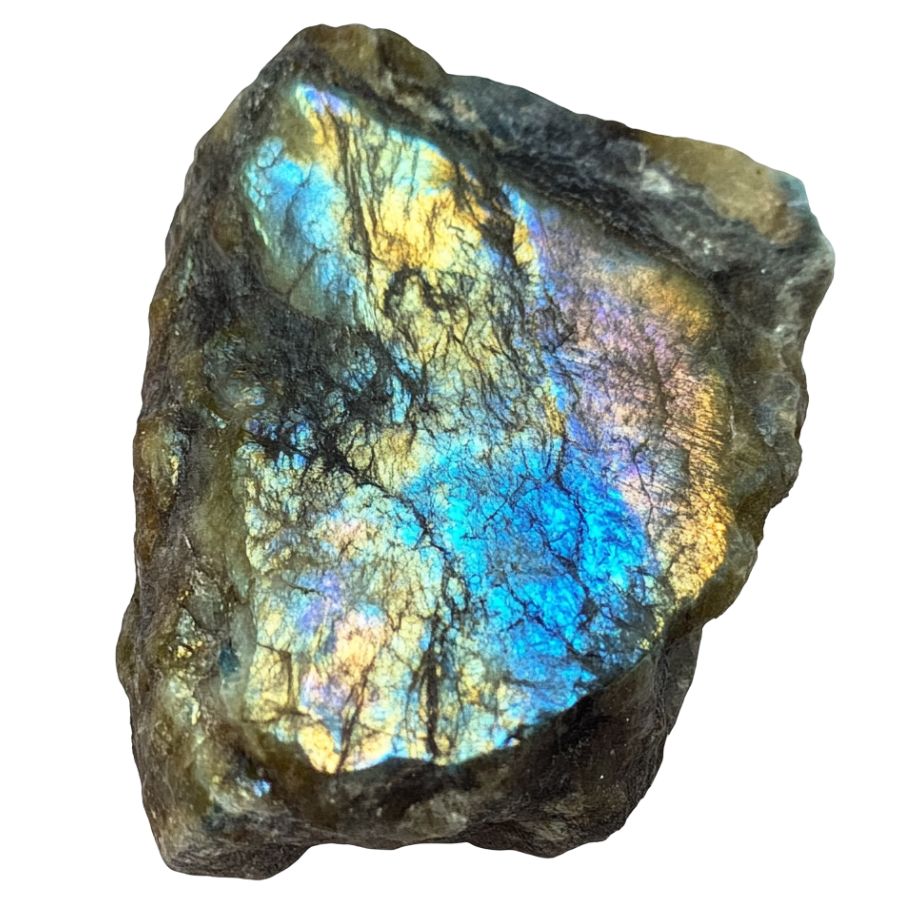
Raw labradorite often shows patches of its famous iridescent flash, even when unpolished. Check dark gray or black areas under direct sunlight – you might catch glimpses of blue, green, or gold shimmer.
Sometimes, you’ll need to wet the surface slightly to see this effect better. The flash isn’t always obvious but usually appears as scattered patches.
Check the Base Color and Texture
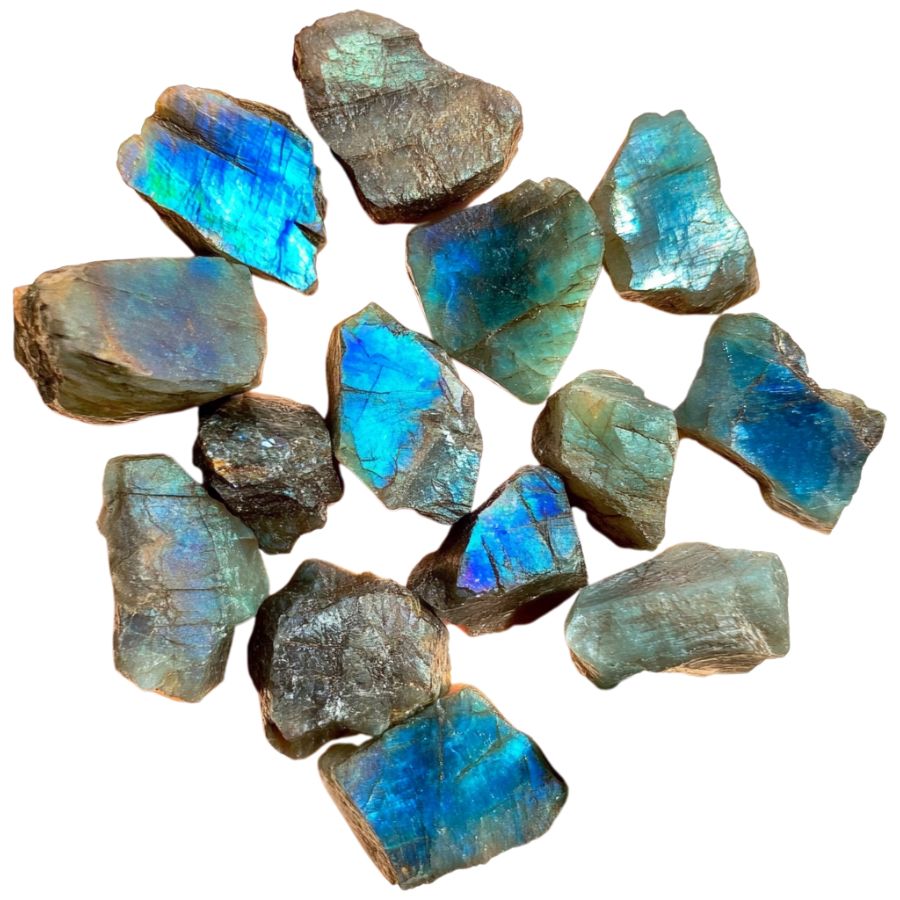
The main body should be dark gray to black, sometimes with a slight greenish tinge. The surface feels smooth but not glossy, similar to unpolished glass.
Look for a slightly bumpy texture with occasional flat surfaces. Fresh breaks will show a more uniform color than weathered surfaces.
Assess the Hardness and Breakage

Try scratching the surface with a copper penny – it shouldn’t leave a mark. The stone often breaks with smooth, flat surfaces at distinct angles.
You’ll notice these angular breaks are pretty characteristic, unlike random rough breaks in common rocks.
Test the Translucency
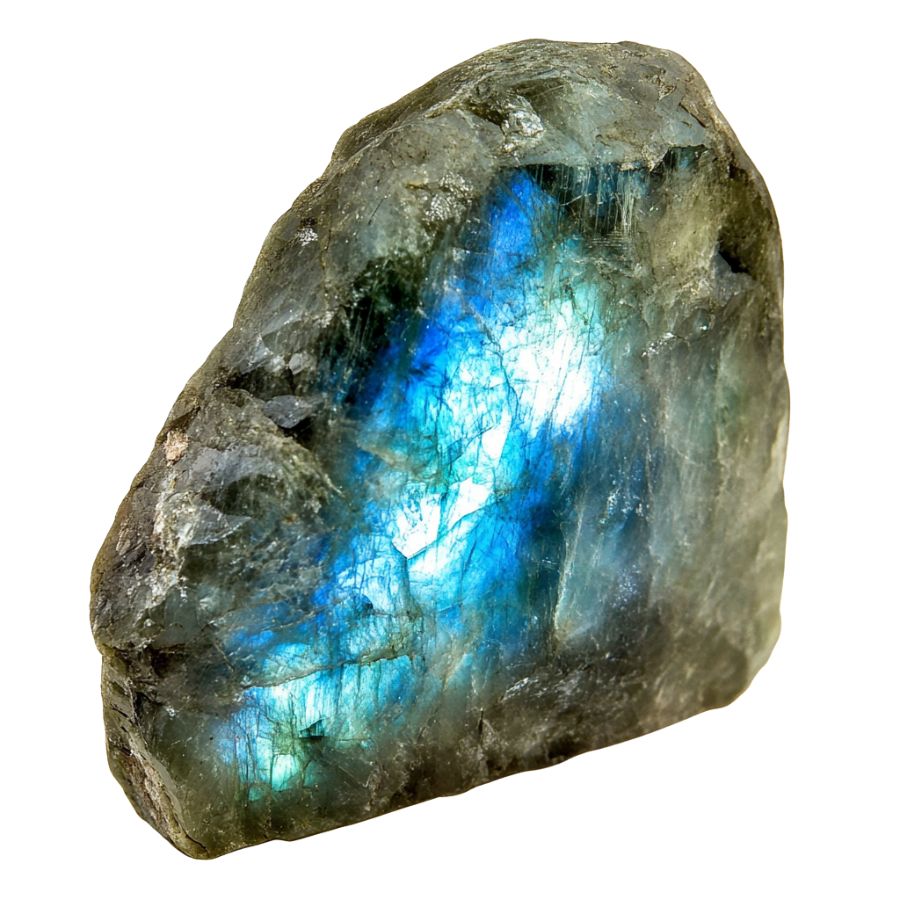
Hold a thin edge up to strong light. Raw labradorite should show some translucency, appearing slightly cloudy rather than completely opaque. The edges might look slightly whitish or gray when light passes through. Thicker pieces will appear darker and more opaque.
A Quick Request About Collecting
Always Confirm Access and Collection Rules!
Before heading out to any of the locations on our list you need to confirm access requirements and collection rules for both public and private locations directly with the location. We haven’t personally verified every location and the access requirements and collection rules often change without notice.
Many of the locations we mention will not allow collecting but are still great places for those who love to find beautiful rocks and minerals in the wild without keeping them. We also can’t guarantee you will find anything in these locations since they are constantly changing.
Always get updated information directly from the source ahead of time to ensure responsible rockhounding. If you want even more current options it’s always a good idea to contact local rock and mineral clubs and groups
Tips on Where to Look
Labradorite isn’t super common in everyday places, but with some smart searching, you can find it. Here’s where you should look:
Metamorphic Rock Formations
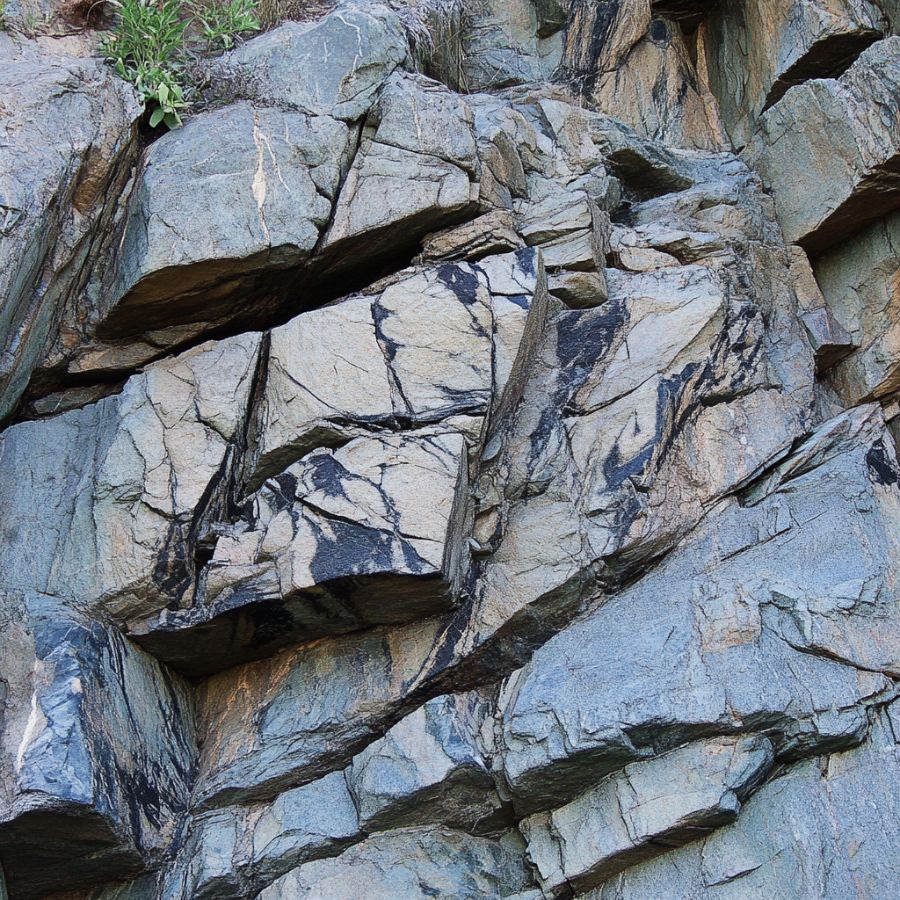
Look for dark-colored rock outcrops. Spot areas with lots of feldspar minerals. Check exposed cliff faces. Sometimes, when the sun hits just right, you might catch that signature blue flash from larger formations that’s a dead giveaway for labradorite presence.
Glacial Deposits
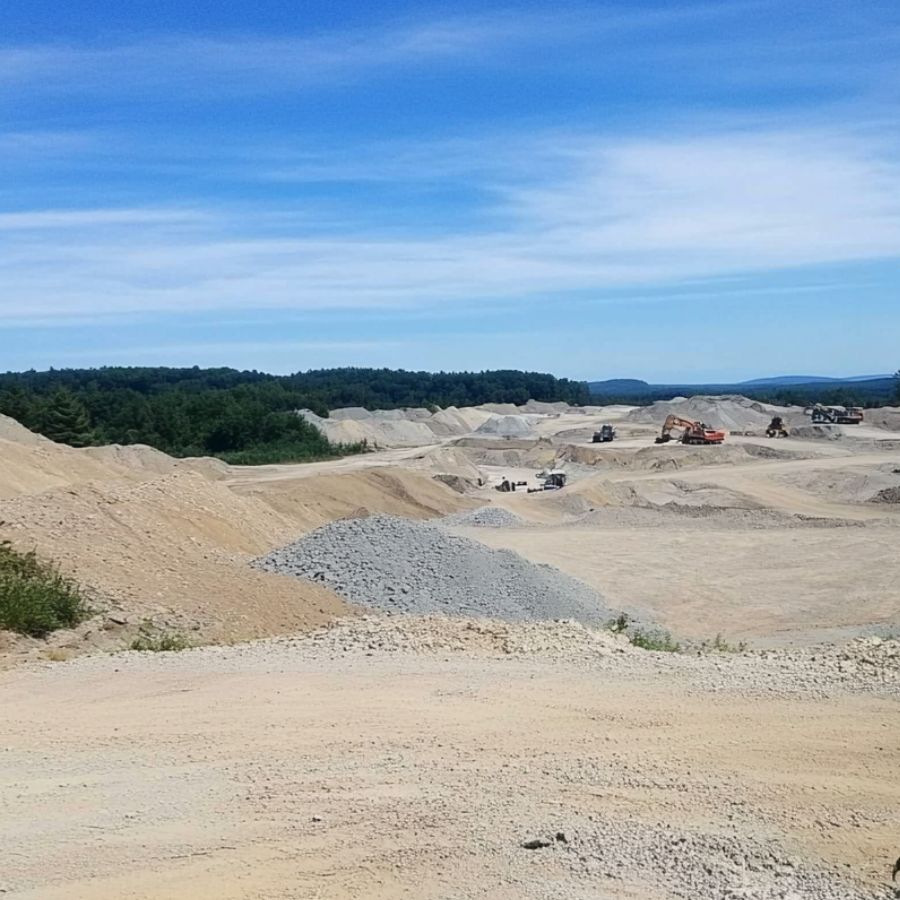
Search river beds after glacial deposits. Check gravel pits near old glacial paths. Look for smooth, dark gray stones mixed with other rocks. These deposits often contain chunks of labradorite that have broken off from larger formations and been carried downstream over thousands of years.
Mining Tailings
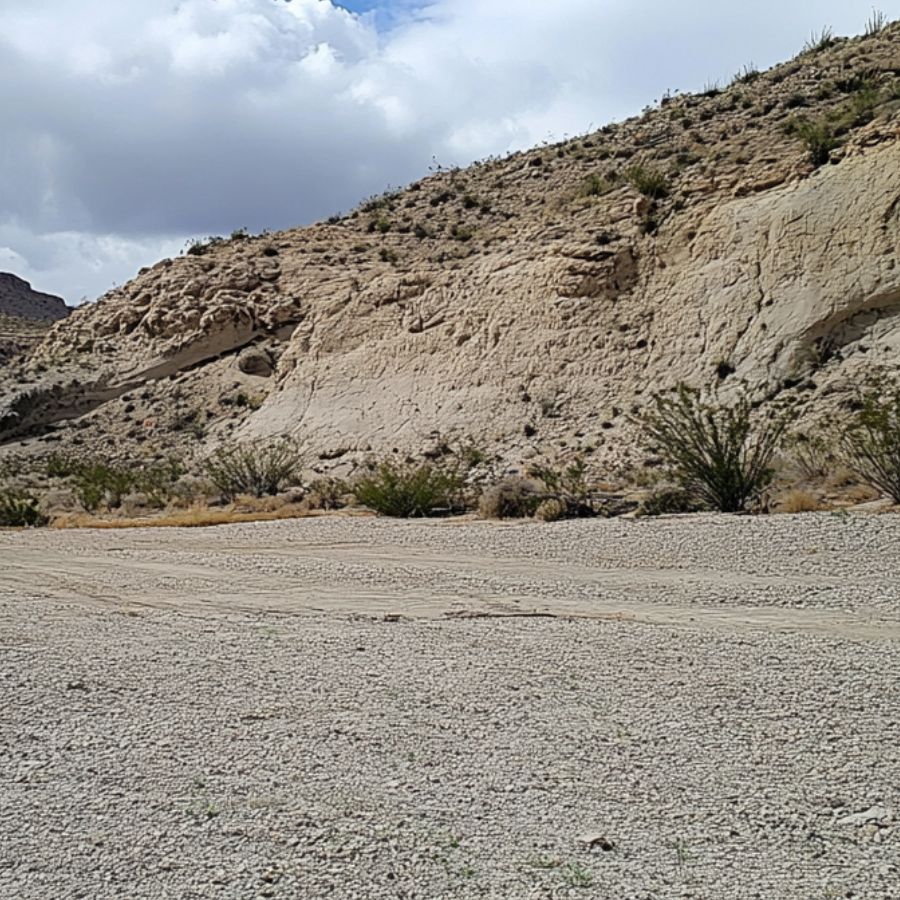
Visit abandoned feldspar mines. Check mine dump areas. Dig through tailings piles. Look for flat, shiny surfaces. The waste rock from old mining operations often contains overlooked pieces of labradorite that weren’t considered valuable during active mining periods but are perfect for collectors.
Stream Beds
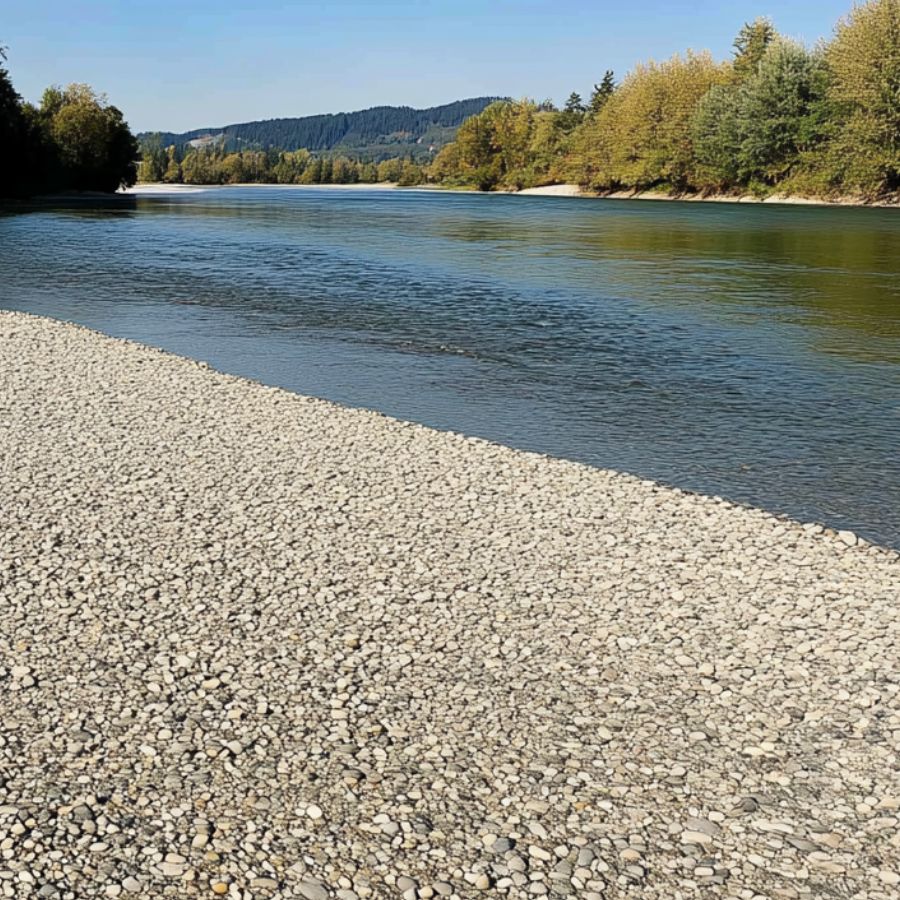
Search clear-water streams. Look under water-worn rocks. Check gravel bars after rain. Spot dark, plate-like stones. The constant water movement often exposes and polishes these stones, making them easier to identify when wet.
Some Great Places To Start
Here are some of the better places in the state to start looking for Labradorite:
Always Confirm Access and Collection Rules!
Before heading out to any of the locations on our list you need to confirm access requirements and collection rules for both public and private locations directly with the location. We haven’t personally verified every location and the access requirements and collection rules often change without notice.
Many of the locations we mention will not allow collecting but are still great places for those who love to find beautiful rocks and minerals in the wild without keeping them. We also can’t guarantee you will find anything in these locations since they are constantly changing.
Always get updated information directly from the source ahead of time to ensure responsible rockhounding. If you want even more current options it’s always a good idea to contact local rock and mineral clubs and groups
Cerro Colorado
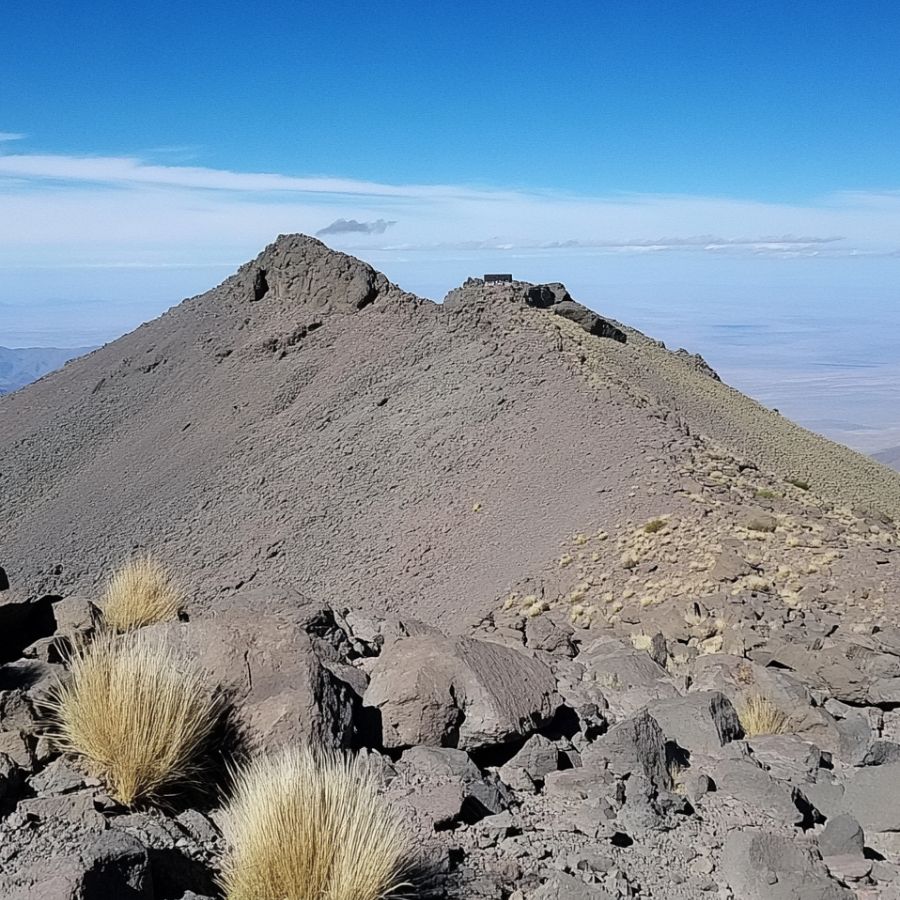
Cerro Colorado is a hill in Bernalillo County, just east of Albuquerque. Its name means “Red Hill” because of the reddish volcanic rocks found there. The volcanic activity in the area has created the perfect conditions for finding minerals like labradorite.
The rocks around Cerro Colorado include volcanic breccias, rhyolites, and basalts. These formed when the area had active volcanoes long ago. Labradorite can be found in the altered feldspar zones within these volcanic rocks. Your best chances of finding this shimmering stone are on the north and northeast slopes.
Look for grayish or bluish crystals in the weathered outcrops of rhyolite and andesite. Local rockhounds also suggest checking dry stream beds after rain, as water often washes loose specimens downhill.
Pueblo Creek
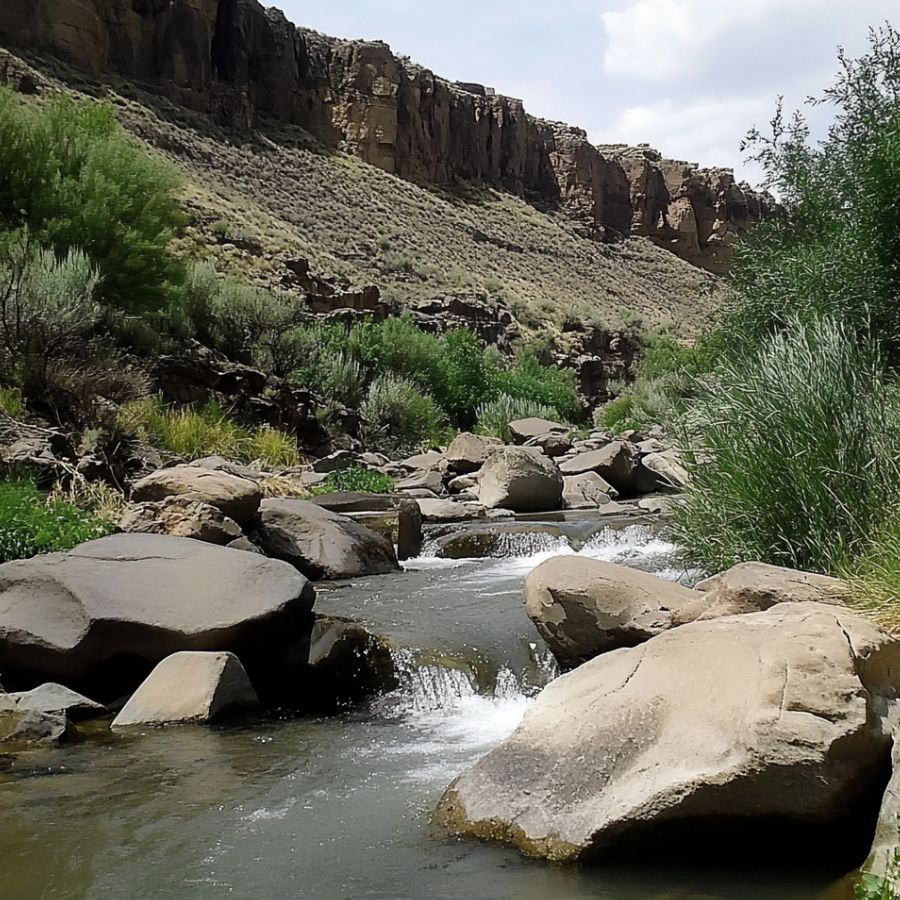
Pueblo Creek runs through a remote area in southwestern New Mexico. Located about 17 miles from the town of Reserve, this creek flows through the beautiful Apache National Forest.
The rocks around Pueblo Creek formed as part of the Mogollon-Datil volcanic field. This means the area once had lots of volcanic activity, creating the right conditions for labradorite to form. The creek has cut through these volcanic layers, sometimes exposing the mineral-rich rocks.
Pueblo Park Campground makes a good starting point for your search. From there, follow the creek bed and look at exposed rock outcrops. Water has eroded the softer materials, sometimes leaving harder minerals like labradorite behind.
The stone appears as dark gray to black crystals that might show blue, green, or gold flashes when turned in the light. Local collectors often find small specimens after spring runoff when the creek has moved new material downstream.
Manzano Mountains
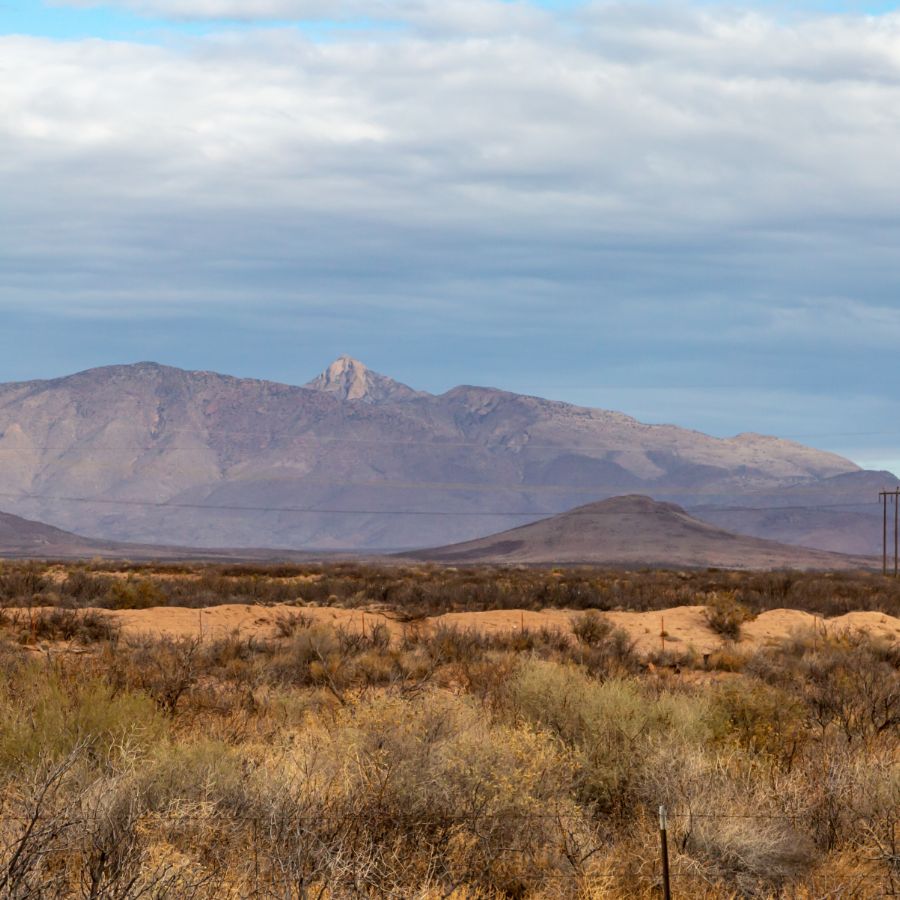
The Manzano Mountains stretch north to south in central New Mexico. These mountains form part of the eastern edge of the Rio Grande Rift, a place where Earth’s crust has been pulling apart. Their rugged slopes and deep canyons hide many geological treasures, including labradorite.
These mountains reveal some of New Mexico’s oldest rocks. Scientists have found Proterozoic rocks here that formed billions of years ago. Later, hot magma pushed up through these ancient rocks, bringing new minerals with it. This complex history created perfect conditions for labradorite to form.
Southern areas of the Manzanos offer the best chances to find labradorite. Look for places with rhyolite flows and basic sills, these are rock formations where the mineral tends to occur. Many rockhounds explore the southern foothills after rain washes away dirt and exposes fresh rock surfaces.
Red River Mining District
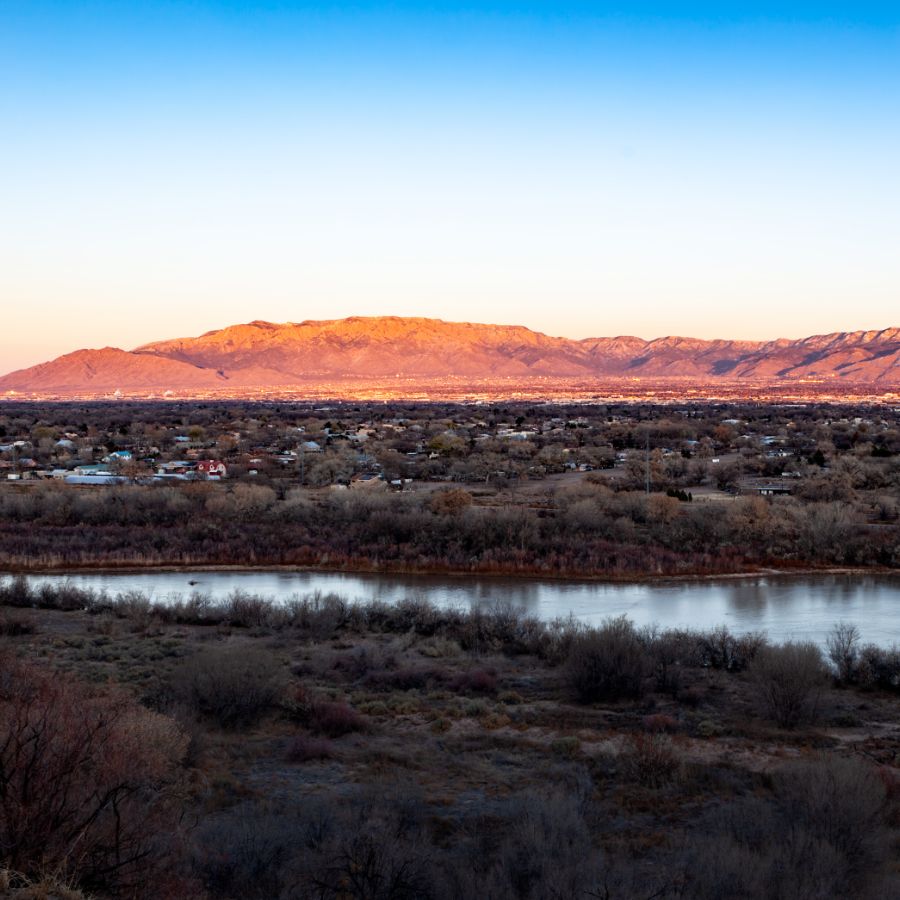
The Red River Mining District covers about 75 square miles in the Sangre de Cristo Mountains. This area became famous in the late 1800s when miners discovered gold and silver. The town of Red River grew into a busy mining camp by 1895. Today, the district attracts mineral collectors looking for various stones, including labradorite.
The geology here features both volcanic rocks and rocks that formed when magma cooled underground. These conditions created many mineral deposits. While gold and silver made the area famous, other minerals like labradorite can also be found.
Labradorite appears most often in the district’s Precambrian metamorphic rocks and around granitic intrusions. Old mining sites sometimes expose these rocks. Check near pegmatite veins, these are bands of very coarse-grained rock that often contain unusual minerals.
The labradorite in this area tends to be darker than samples from other locations. Some pieces show strong blue flashes when viewed from certain angles.
Rattlesnake Hill

Rattlesnake Hill stands in Torrance County, with a landscape of rough terrain and diverse rock types. Years of weathering have exposed different rock layers, making it easier for rockhounds to find minerals. The hill contains both igneous rocks (formed from magma) and metamorphic rocks (changed by heat and pressure).
Mineral collectors know this spot for its variety of interesting stones. Quartz, feldspar, and mica appear throughout the area, especially in pegmatite veins that cut through the hill. These veins formed when mineral-rich fluids filled cracks in the existing rock.
The southern slopes of Rattlesnake Hill offer the best places to search for labradorite. Look for the exposed pegmatite veins that appear as bands of coarse-grained rock. The granitic outcrops near the top of the hill also sometimes contain labradorite crystals embedded in the surrounding rock.
Trails lead from the base to different heights on the hill. Bring a rock hammer and protective glasses to safely extract samples.
Places Labradorite has been found by County
After discussing our top picks, we wanted to discuss the other places on our list. Below is a list of the additional locations along with a breakdown of each place by county.
| County | Location |
| Bernalillo | Tijeras Canyon Mining District |
| Catron | Mogollon Mountains |
| Cibola | East Grants Ridge Mining District |
| Cibola | Mount Taylor Region |
| Doña Ana | Kilbourne Hole |
| Doña Ana | Organ Mining District |
| Grant | Eureka Mining District |
| Grant | Hanover-Fierro Mining District |
| Grant | Pinos Altos Mining District |
| Hidalgo | Pyramid Mountains |
| Hidalgo | Sylvanite Mining District |
| Lincoln | Capitan Mountains |
| Lincoln | Nogal Mining District |
| Luna | Florida Mountains Mining District |
| Rio Arriba | Abiquiu District |
| Sandoval | Cabezon Peak Area |
| Sandoval | Jemez Springs District |
| Sierra | Caballo Mountains |
| Sierra | Grandview Canyon Mining District |
| Sierra | Iron Mountain No. 2 District |
| Sierra | Macho Mining District |
| Socorro | Luis Lopez Manganese District |
| Socorro | Magdalena Mining District |
| Taos | Picuris District |

